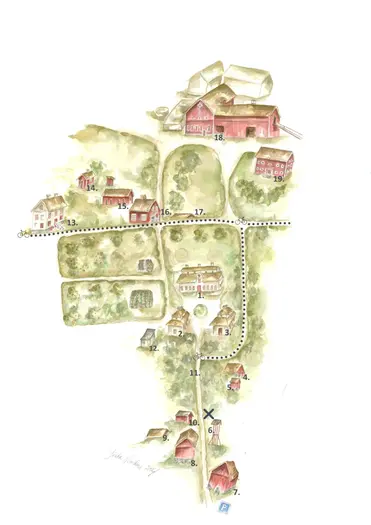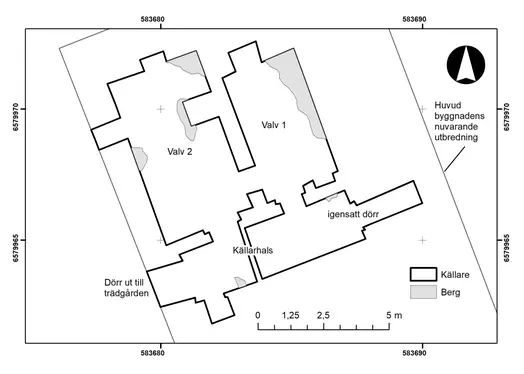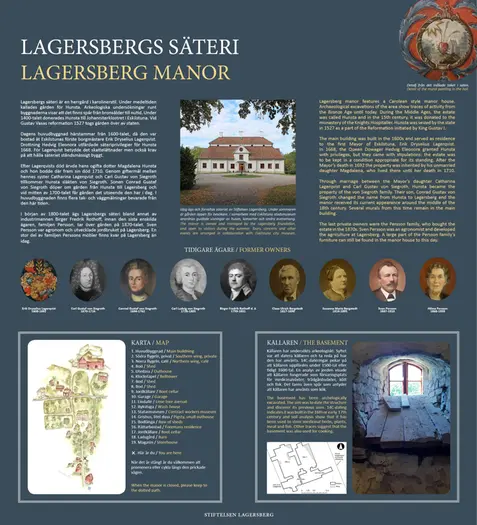
Lagersberg manor
Lagersberg manor features a Carolean style manor house. Archaeological excavations of the area show traces of activity from the Bronze Age until today. During the Middle Ages, the estate was called Hunsta and in the 15th century, it was donated to the monastery of the Knights Hospitaller. Hunsta was seized by the state in 1527 as a part of the Reformation initiated by King Gustav I.
The main building was built in the 1600s and served as residence to the first Mayor of Eskilstuna, Erik Dryselius Lagerqvist. In 1668, the Queen Dowager Hedvig Eleonora granted Hunsta with privileges, but they came with stipulations: the estate was to be kept in a condition appropriate for its standing.
After the Mayor’s death in 1692 the property was inherited by his unmarried daughter Magdalena, who lived there until her death in 1710. Through marriage between the Mayor’s daughter Catharina Lagerqvist and Carl Gustav von Siegroth, Hunsta became the property of the von Siegroth family. Their son, Conrad Gustav von Siegroth changed the name from Hunsta to Lagersberg and the manor received its current appearance around the middle of the 18th century. Several murals from this time remain in the main building.
The last private owners were the Persson family, who bought the estate in the 1870s. Sven Persson was an agronomist and developed the agriculture at Lagersberg. A large part of the Persson family’s furniture can still be found in the manor house to this day.
The manor is owned and managed by the Lagersberg foundation, and open to visitors during the summer. Tours, concerts and other events are arranged in collaboration with Eskilstuna city museum.

1. Main buildning
2. Southern wing, private
3. Northern wing, café
4. Shed
5. Outhouse
6. Belltower
7. Shed
8. Shed
9. Root cellar
10. Garage
11. Lime tree avenué
12. Wash-house
13. Contract workers museum
14. Pigsty, small outhouse
15. Row of sheds
16. Foremans residence, private
17. Root cellar
18. Barn
19. Storehouse
X. You are here
When the manor is closed, please keep to the dotted path.
THE BASEMENT
The basement has been archelogically excavated. The aim was to date the structure and discover its previous uses. 14C-dating indicates it was built in the 16th or early 17th century and soil analysis show that it has been used to store medicinal herbs, plants, meat and fish. Other traces suggest that the basement was also used for cooking.

